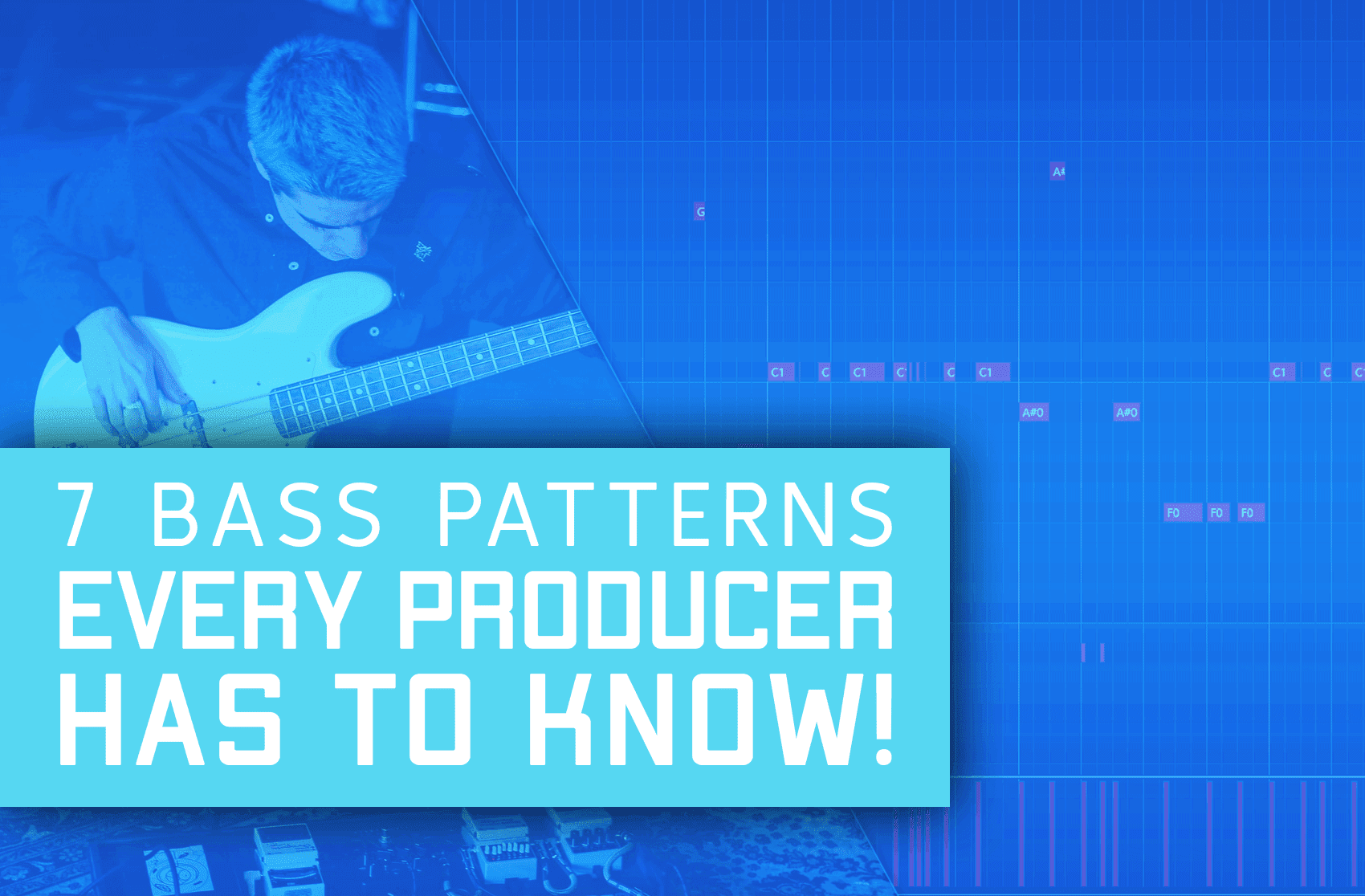Knowing how to take command of your basslines is an extremely powerful skill in the world of music production, especially if you aim to get people moving with your music.
Not every person has a natural knack for piecing together instantly groovy basslines, but you can use certain patterns as building blocks to come up with new unique ideas of your own.
In today’s article, I’m going to run you through 7 bass patterns that most producers or bassists should be familiar with if they wish to make dynamic, interesting rhythmic compositions.
These patterns are not listed in any sort of order of importance, and I also have not focused on any specific genre. This approach is a bit more universal so that producers and bassists can improve their musicality
Bass Pattern #1: Sustains (Super Basic)
You have to learn to crawl before you can walk. Sustained notes provide a simple backbone to most rhythms and serve as great starting blocks for further composition.
The pattern is generally made up of long single notes that are 1 bar in length. Mastering this technique is crucial for any player that wants to perfect the art of sitting in the pocket.

Even though this pattern has a drawn-out feel it can be very effective when trying to create distinct dynamics in your arrangements, especially when used for half-time sections in more complex songs.
Bass Pattern #2: Straight Notes (Beginners)
Where sustained notes will strengthen your attention to pocket, straight notes are great and are wonderful for developing endurance in the hands. As the name implies, straight notes play in time with the metronome without any swing or added groove.

The technique is crucial for anyone that wants to better their sense of timing and mechanics while playing. This pattern is often used in variations for styles like Pop, Indie, EDM, and Techno, as it gives most arrangements an added sense of momentum or drive.
Bass Pattern #3: Dotted Notes (Beginners)
Dotted notes are one of the initial stepping stones when trying to modulate groove in a straightforward bassline. The dot on these notes lengthens a regular note by half its size.
For example, a dotted 1/4th note will have an extra 1/8th added to its regular length. The result of these notes is a very pleasant sonic illusion that bends the natural feel of backbeat.

There are a wide variety of uses for dotted notes in composition, especially when you need something to break a monotonous groove. You’ll find dotted notes all over groove-centered genres such as Trap, House, Dancehall, and Drum & Bass.
Bass Pattern #4: Arpeggios (Beginners)
There are fewer fundamental melodic patterns that enhance a player’s arsenal as well as arpeggios.
Arpeggios are created by playing the first, third, fifth, and seventh degrees of any scale. These notes are generally the safer notes for players to use when playing as they make up the primary characteristics of the scale.
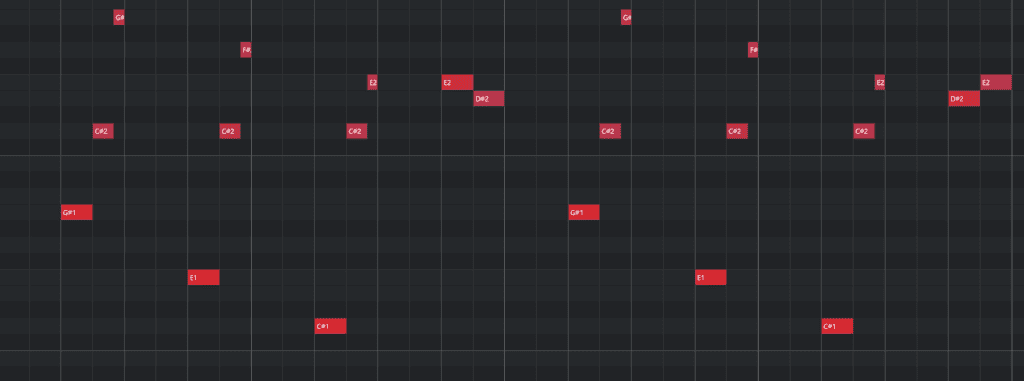
Arpeggios can be played in a variety of combinations to make basslines more interesting, however, most producers know that with bass – tact is everything.
Practicing these patterns on the bass or keyboard also dramatically improves your muscle memory, and will allow you to think less when improvising.
Bass Pattern #5: Octaves (Intermediate)
Octaves offer players and producers a simple and effective solution for enhancing their basslines. Because octaves involve playing the same note 12 steps higher or lower, they add punch and dynamic without being too intrusive.
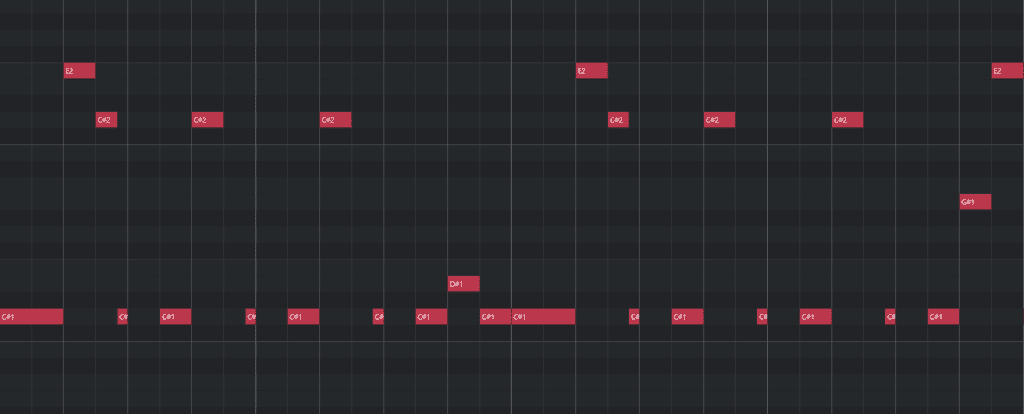
Usually, these patterns start on the lower note and jump up an octave for extra bounce. Most octave patterns are relatively simple to develop on either bass or keys. You can find this pattern in subtle variations across most genres especially Funk, Disco, Hip-Hop, and House.
Bass Pattern #6: Combo Lines (Intermediate/Professionals)
Once you’ve managed to master the fundamental patterns listed above, you can start combining them to create new basslines for your music. There are no rules or limitations to building combo lines.
However, there are some simple guidelines you can use to ensure they complement your arrangements. Here is a quick example of how to use the patterns above to compose your own basslines.
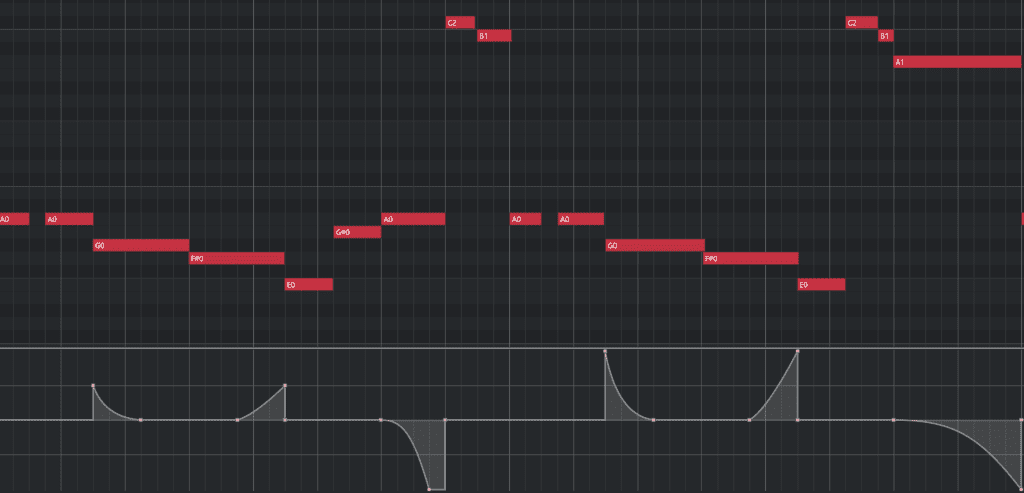
- A bass line generally sits in time with the kick and snare of your backbeat. Create a sustained note at the start of each bar under a section of your backbeat. Most drum patterns use 4 bars of 4 counts.
- Divide your bar length sustained notes into 4 quarters equally on your grid to create ¼ notes. This technique is called subdividing.
- From this point, you can start to tweak the length and placement of your notes to taste. Try to use variations of note and silence so that your bassline lifts the other instruments and pumps with the rhythmic elements.
Bass Pattern #7: The Motif (Professionals)
The final technique on this list varies depending on the genre but generally carries a universal purpose. A bass motif is a very distinct and definitive bassline that stays consistent for the majority of a composition.
The general intention behind this type of bassline is to create a repetition over songs where the rhythm is the focal point. As such, most compositions with motifs have vocal and melodic parts written around them.
You can find simple motifs in modern genres like Pop or Trap, and more complex ones in styles like Funk, Afrobeat, and Jazz.
For example, this bassline contains all the motifs of Future Bounce & Future House which are sub genres in electronic music. And, as you can see it contains a lot of the basic patterns we discussed in this article.
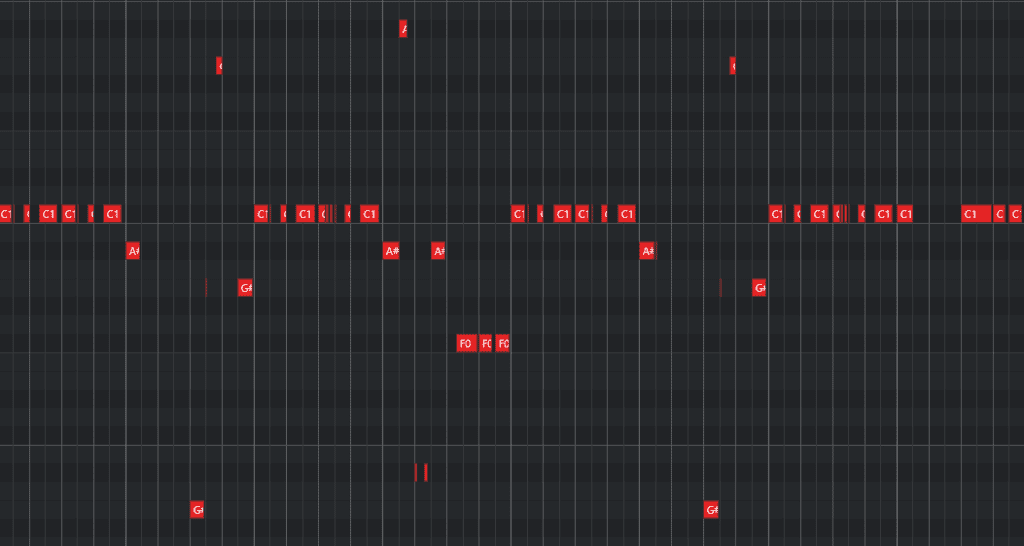
Bonus Tip: Add Pitch Bends & Slides To Your Basslines
Adding pitch bends to your basslines will make them sound a lot more natural and make a lot more sense to the human ear. It’s even more powerful than adding pitch bends to your leads since the bass is the thing that holds your entire song together, therefore adding slides to it will make the whole song sound like it’s sliding.
However, be cautious when doing so, since adding to many slides can make your song confusing and hard to follow.
Final Thoughts
There is a very popular classic dance that states, ‘‘Groove is in the heart.’’ and most accomplished bass players can attest to this.
Knowing how to compose effective basslines comes down to understanding musical timing and then applying that knowledge to your natural intuition.
Everyone has an internal metronome, and great bass players know how to map theirs out effectively to create smooth, impactful compositions for bass.
The patterns listed above should give you a healthy toolkit of abilities to confidently piece your bass lines together, and I hope you have tons of fun doing just that.
Thanks for reading through this short list of patterns that every producer and bass player should know.
Would you like to find out more information on beat making and production? Check out our handy 14 Tips That Will Improve Your Beats Forever. This article comes with a list of techniques used by industry professionals that you can take advantage of – today.

